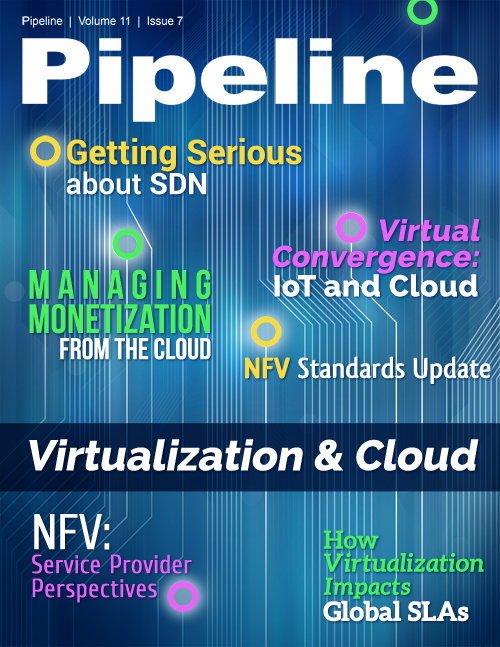NFV Standards Update
- Security of the virtualized infrastructure for network functions
- Abstractions for networks and carrierāscale network services in imperative and declarative languages
- Impacts of data plane workloads on Computer Systems Architectures
- Locality and latency in software implementations of largeāscale network services
- Reāarchitecting network functions (e.g. 3GPP) to recognize availability of cloud technology mechanisms for scalability and reliability
- Evolution patterns to NFV, management of transition and heterogeneous scenarios
- Portability mechanisms and management across NFV infrastructure realizations
- Tools for validating network services and automating their deployment and management
- Applying compositional patterns (Network Function Chains) for parallelism, control logic, performance, monitoring and reliability of network services
- Monitoring and metering of carrierāscale virtualized networks. Application of Big Data models
- Addressing the privacy implications of the new virtualized network service models. Relying on NFV to increase user privacy at the network scale
- Exploring how the new virtualization support paradigms can facilitate new network concepts and architectures
- Operationalization of NFV with diagnostic and support frameworks
- Commercial and Economic impact of NFV on ecosystems autonomic (self) management technologies in NFV (e.g., processing of alarms)
- Complexity of NFV systems
- Energy Efficiency of NFV systems
- Performance optimization, tradeoffs & planning rules for multiple VNF workloads
- New service modelling and algorithms for automatic changes of virtual network services architecture
- What "Next Big Thing(s)" will be enabled postāNFV?
āOperator participants are extremely pleased with the outcomes of NFV Phase 1ā, stated Don Clarke, Chair of the NFV Network Operator Council. āFew of us could have anticipated how fast this initiative would grow and how influential it would become. As we enter Phase 2, operatorsā expectations continue to rise. We are very conscious of the fact that vendors are investing significant resources to develop NFV capability. It is, therefore, very important to stay focused and maintain our momentum to create opportunities for NFV deployment.ā
Operators and vendors alike have applauded benefits of the ISGās approach to the work and innovative standardization cooperation model, built upon assertive goals, pragmatism, lightweight process, and unprecedented collaboration, allowing the first phase to be completed in record time.
ETSI says the planning for NFV Phase 2 is now complete and work has commenced with agreement on the objectives and scope to:
-
Grow an interoperable NFV Ecosystem
-
Specify reference points and requirements defined in Phase 1
-
Further grow industry engagement to ensure that NFV requirements are satisfied
-
Clarify how NFV intersects with SDN and related standards, industry, and open source initiatives
Steven Wright, Chair of the ETSI NFV ISG, observed, āI am very encouraged by the increasing enthusiasm amongst operators and partners alike. The NFV community that we have fostered has never been more robust. While we have challenges to overcome, broad industry participation has resulted in a healthy debate on our Phase 2 plans, which are converging as expected.ā



















